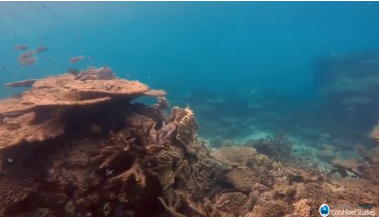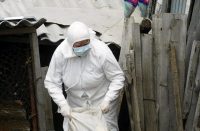
CANBERRA, Australia (Reuters) –Australia will spend nearly A$1.3 billion ($965.25 million) over the next five years to improve the well being of the Great Barrier Reef in an attempt to stop UNESCO from classifying the World Heritage Site as “in danger”.
In the first progress report to UNESCO – requested by United Nation’s when it stopped short of placing the Great Barrier Reef on an “in danger” list last May – Australia said it will spend A$1.3 billion to continue the “good progress” it has made in improving the world’s largest living ecosystem.
Much of the accelerated spending will address water quality and ecosystem health, Australia said in the UNESCO report.
UNESCO will now consider Australia’s progress. If it is unsatisfied with Australia’s performance, it could place the Great Barrier Reef on “in danger” list – embarrassing Australia’s government.
“This report will hopefully see Australia stay off the UNESCO in danger watch list,” said Josh Frydenberg, Australia’s minister for the environment.
“We are very concerned about the health of the reef, it’s suffered a major bleaching event but it is a great national and world treasure.”
Environmental groups criticized Australia’s UNESCO report, coming just days after confirmation of significant damage.
“It is unacceptable that this government is now congratulating itself over its handling of the reef’s health during that same period without promising any meaningful improvement,” Shani Tager, reef campaigner, Greenpeace Australia told Reuters via telephone.
Earlier this week, Australian scientists said two-thirds of a 700-km (435 miles) stretch of coral within the Great Barrier Reef has been killed in the past nine months, the worst die-off ever recorded on the World Heritage site.
“In the last year alone, we have decreased the sediment runoff by some 12 per cent and the herbicides and the pesticides by some 33 per cent,” added Frydenberg.
“We are concerned about climate change, it’s the number one threat to the reef and that’s why we are working through the various funds that we have to support clean, renewable innovation, energy, to support innovative techniques, to upgrade sewage plants, to work with them on the sugar mills, all those sort of practices can help reduce emissions and also help improve water quality on the reef.”
Their finding of the die-off in the reef’s north is a major blow for tourism at reef which, according to a 2013 Deloitte Access Economics report, attracts about A$5.2 billion ($3.9 billion) in spending each year.
Climate scientists argue that increased carbon dioxide in the atmosphere traps heat radiating from earth, creating global warming. Australia is one of the largest carbon emitters per capita because of its reliance on coal-fired power plants for electricity.
In 2015, Australia developed a 35-year plan to improve the Great Barrier Reef that calls to limit pollution and restrictions on developing of new ports.







